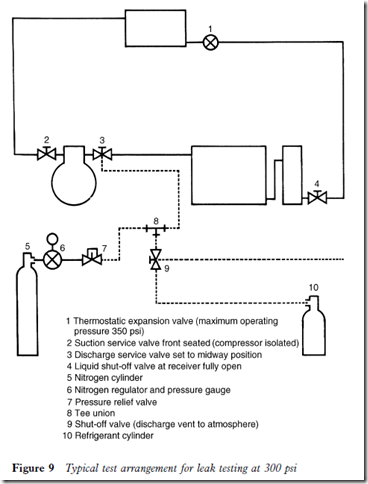Handling refrigerants: safety precautions
Although the common refrigerants (R12, R22, R502 etc.) are not considered hazardous, it must be remembered that all refrigerants are heavier than air and will replace air in a confined space very quickly. This can be dangerous; if the air does not contain at least 19 per cent oxygen, loss of consciousness may result.
When testing for leaks, always ensure that the area is well ventilated if at all possible. Always stand to one side of the detector in case there is a sudden violent discharge from the suspected pipework.
The following precautions should be taken:
1 Wear goggles, gloves and overalls at all times to protect eyes and to prevent direct contact of refrigerant with the skin, which can cause burns. This applies especially when charging or discharging refrigerant.
2 Make sure that the service cylinder is not overfilled.
3 Do not expose cylinders to direct sunlight, radiated heat or convected heat from appliances.
4 Avoid discharge near naked flames or flame producing appliances.
5 Avoid direct contact with refrigerant/oil solutions from hermetic systems (motor burn-out), which can be very acidic.
6 Always vapour charge a system from the low side to avoid possible damage to compressor valves.
7 Always check that the refrigerant is correct for the system being charged.
8 Whenever possible ensure that the working area is well ventilated. If ammonia is being used, ensure that a respirator or some form of breathing apparatus is at hand.
Work safely!
